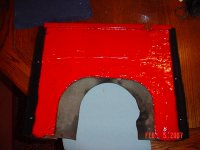John Loftus
Darth Vader
Offline
I was reading in Geoff Healey's book about the proposed and actual changes for the BJ7 model. He said that, "Hot air from the radiator and power unit was flowing through the space between gearbox and tunnel. This was reduced by the use of a rubber seal around the gearbox to engine joint."
Can anyone describe this part, how it was attached and/or have a picture? I can't find it in the BJ7/8 Parts book. Perhaps it was never produced?
The BCS catalog has a heat deflector which is the closest thing I've seen but it says it's for "all side shifts".
Thanks,
John
Can anyone describe this part, how it was attached and/or have a picture? I can't find it in the BJ7/8 Parts book. Perhaps it was never produced?
The BCS catalog has a heat deflector which is the closest thing I've seen but it says it's for "all side shifts".
Thanks,
John

 Hi Guest!
Hi Guest!

 smilie in place of the real @
smilie in place of the real @
 Pretty Please - add it to our Events forum(s) and add to the calendar! >>
Pretty Please - add it to our Events forum(s) and add to the calendar! >> 

